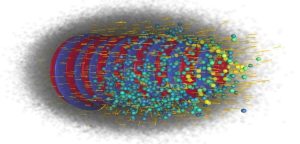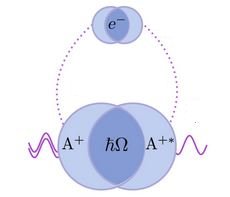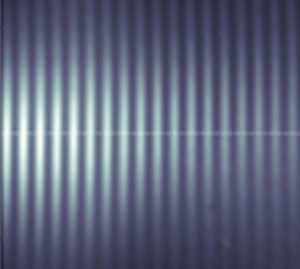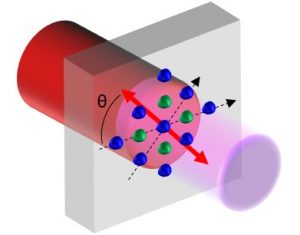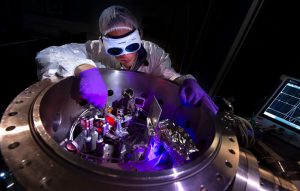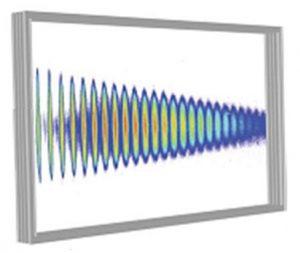Au LIDYL, les simulations numériques permettent de modéliser l’interaction de la lumière avec la matière en particulier sous l’effet d’impulsions laser de très haute intensité et extrêmement brèves (domaine attoseconde (10-18 s). Les simulations de plasma denses ou dilués, en particulier à la surface d’un solide, ou encore l’interaction de plusieurs impulsions successives (miroir plasma) demandent des réaliser des calculs intensifs ultrapuissants, sur des machines pouvant effectuer des milliards de calculs par seconde.
Cette thématique couvre les activités suivantes au sein du LIDYL :
- Calcul exascale
- Développement algorithmique et modélisation
- Frugalité numérique
- Intelligence artificielle

3D simulations of laser-plasma interactions
Interpretation/design of experiments performed in the PHI group require theoretical modeling supported by challenging 3D Particle-In-Cell (PIC) simulations of laser-plasma interactions. These 3D simulations are paramount for building analytical models of important physical processes as well as obtaining quantitative estimates of the properties of the light/particle sources produced by the novel schemes developed in our group.
Up to now, 3D simulations of plasma mirror sources could not be performed with standard PIC codes as these induce unphysical errors degrading harmonic and electron properties even at very high numerical resolution. We recently demonstrated with LBNL that mitigation of these errors requires huge resource-to-solution that has prevented for a long time accurate 3D modeling even on the largest supercomputers. This has strongly limited the design of applications based on plasma mirror sources. In this context, we recently developed (in collaboration with LBNL) the highly-accurate and massively parallel pseudo-spectral PIC code PICSAR (‘Particle-In-Cell Scalable Application Ressource’) that employs novel massively parallel pseudo-spectral Maxwell solvers to suppress unphysical errors. This code significantly reduces resource-to-solution required to achieve a given accuracy and enabled the very first 3D accurate simulations of plasma mirror sources on large supercomputers as required by our activities. These 3D simulations already enabled a fine understanding of recent 100TW PM experiments at CEA previously out of reach of standard 3D codes. PICSAR has also been highly optimized on exascale architectures that will be required for the most challenging 3D simulations to come.
The 3D simulations run in support of experiments require huge computational ressources. As PICSAR is one of the workhorses of exascale programs/design centers, we regularly obtain 100 million CPU hours a year on petascale clusters/exascale testbeds (e.g. through the INCITE call for proposals) that are key to the success of our theoretical activities.
PICSAR can be run as a standalone code, or as a library called by another PIC code. At present, It notably enhances capabilities of major PIC codes in US (Warp,WarpX) and in Europe (SMILEI). In this regard, PICSAR has been coupled (through the python layer) to the open source code Warp that can now call PICSAR routines for performing the core and most time-consuming parts of the PIC loop. This coupling significantly boosted Warp by a x8 speed-up and enabled its use on modern architectures. «




